How to Use a Lead Paint Test Kit (With Pictures)
Whether you’re wanting to repaint a piece of furniture, or keep it as is, here is how to use a lead paint test kit on furniture.
Learn more painting furniture tips and ideas here!

There are so many painted pieces of furniture out there, and sometimes you really want to get that paint off of it.
Or maybe it’s chipping and you want to make sure that it’s okay to have in your home.
Good news! There are quick DIY lead-based paint test kits available at Home Depot, Amazon, and other local hardware stores that will tell you if your furniture has lead paint.
As an Amazon Associate, I earn from qualifying purchases. I also may earn from other qualifying purchases with other companies or get free product to review and use. All opinions are my own.
DIY Lead Paint Test Kit
First off, this is the lead based paint test kit that I’ve used many times.

It comes in a two-pack usually and has a little test card to make sure the test works properly.
These things are super easy to use! The results are instant. And it detects lead on painted wood, metal, vinyl, and plastic, and drywall and plaster.
The liquid that is in it won’t stain your paint either. Just wipe it away with a wet cloth!
How to Use a Lead Paint Test
- Squish the tube where it’s marked with an A. You should feel the container inside of the tube break.
- Then squish the tube where it’s marked with a B. Again you should feel something break inside.
- Shake the tester a couple of times to mix the liquid.
- With the tip side down, squeeze the tube until some orange liquid comes out of the tip.
- Rub it onto the paint for about 30 seconds.
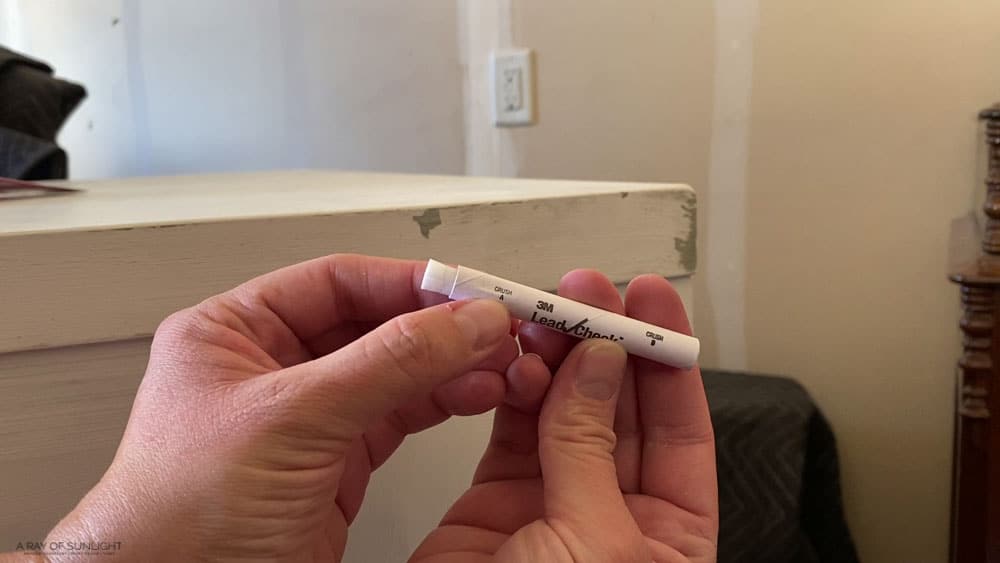
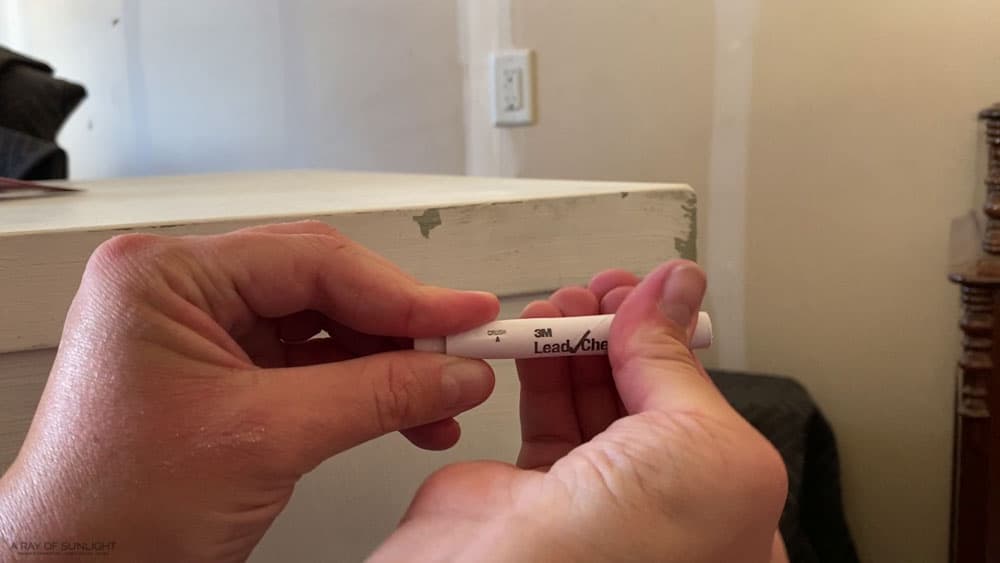

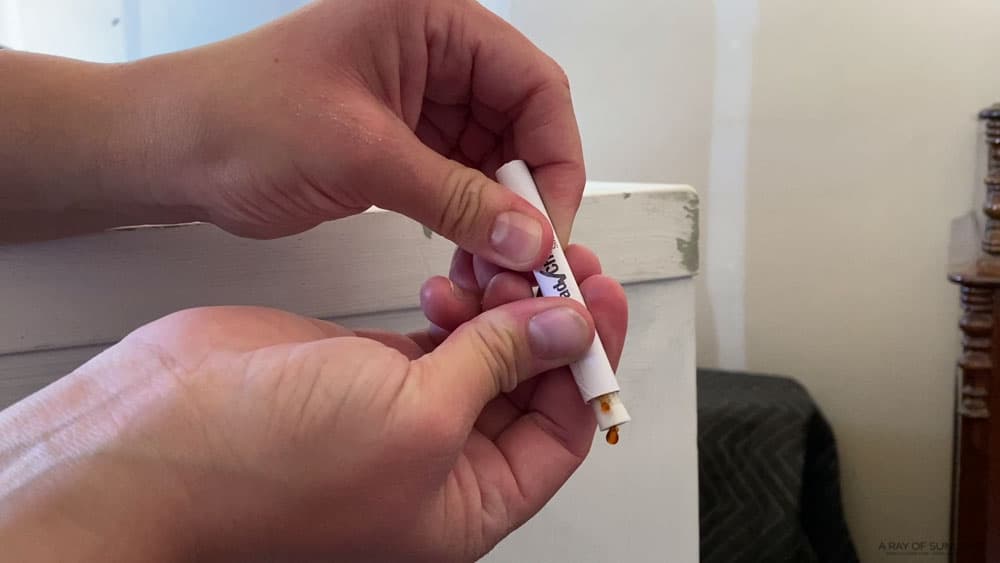
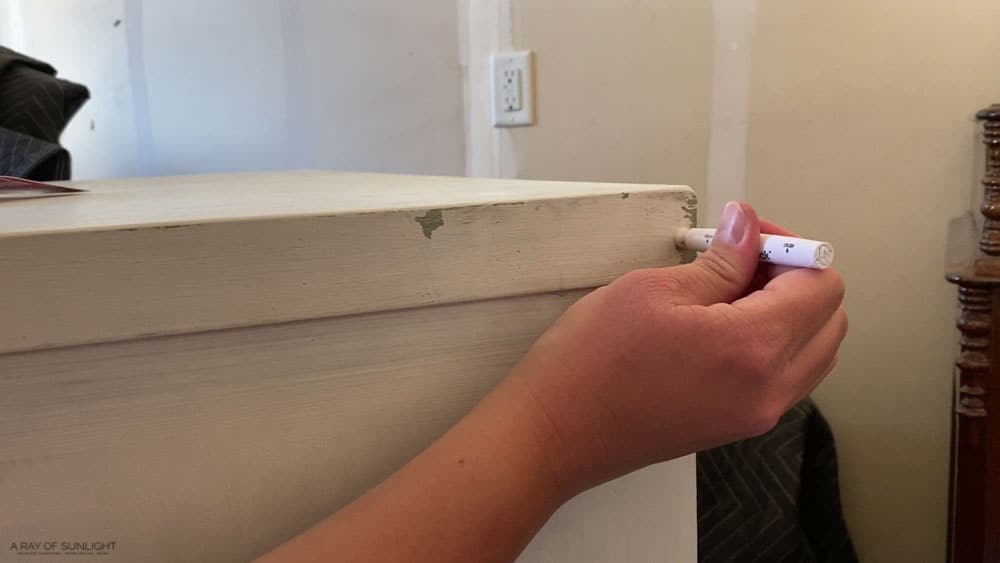

Lead Paint Test Results
If it turns pink or red, that verifies that it is lead-based paint.

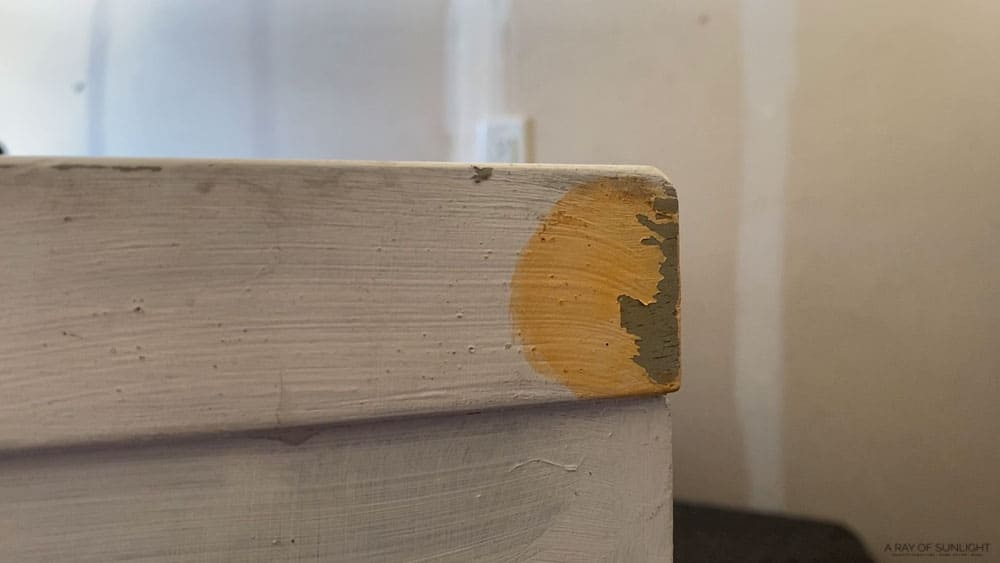
But, if it stays orange, it isn’t lead-based paint.
Double Checking the Lead Paint Test Results
But just to be sure that you didn’t get a false negative, you can rub the tip onto the test confirmation card that is included with the test kit.
It usually has 4 circles on it. The circles all have lead in them, so the liquid in the tube should turn the circles red. That verifies that the test worked correctly.

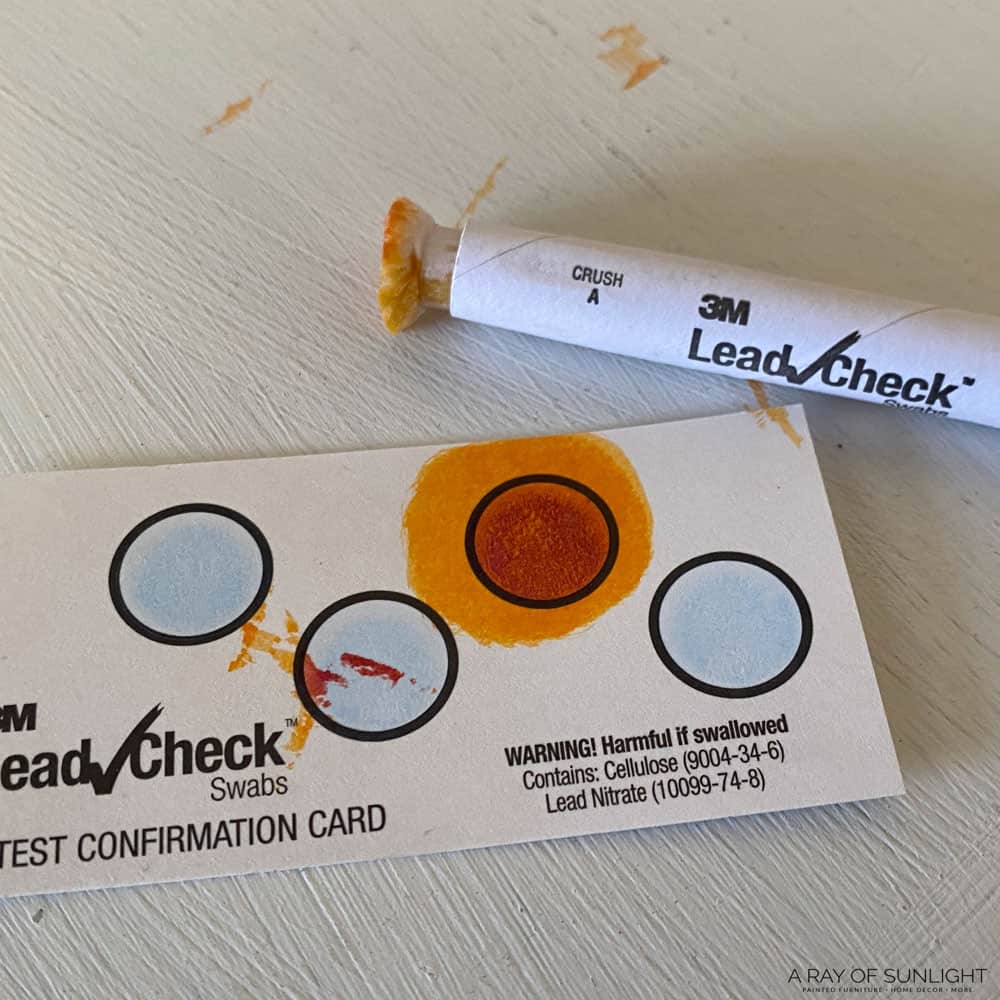
If the circle doesn’t turn red on the test card when you put the liquid on it, then you may not have gotten accurate results.
What to Do if Your Furniture has Lead Paint
((First off, I’m not an expert. I’ve just done a lot of research on what to do when my furniture has lead-based paint on it. And now I’m sharing that information with you!)
If your test left a red mark on your furniture, don’t worry. You can safely remove lead-based paint yourself. Or you can even paint over it.
From what I have learned, the biggest concern is that you don’t want it to somehow get inside of you or anyone else. (Think little kids putting things in their mouth.)
So chipping, cracking, lead paint is definitely not good if there is anyone around that will put it in their mouth.
And that means that sanding lead paint isn’t a good idea either. (Sanding just opens up so many ways for it to get inside of you).
Instead, you can:
- Remove lead-based paint with a chemical stripper.
- Paint or seal it if it’s in good condition.
How to Remove Lead Based Paint from Wood with a Chemical Stripper
My favorite paint stripper is Citristrip. It’s a very low odor, and it works really well. Though, it’s not a super fast process.
Here is a project in this post on how to strip paint from wood furniture where I walk through the entire process of stripping paint from a dresser with Citristrip stripper.
It wasn’t necessarily lead-based paint, but in my experience, it has been the same process and experience whether it’s lead paint or not.
This dresser makeover on removing paint from furniture was actually painted with lead-based paint though. Same process, just a different piece of furniture.
Best of luck with your projects!
More Painting Furniture Resources
- Painting Techniques for Furniture
- Furniture Painting Tools And Supplies
- Types of Paint for Furniture
- Heirloom Traditions All In One Paint Review
Follow us on YouTube to get more tips for painting furniture.
Or share your project with us on our Facebook Group and be part of our community. See you there!


